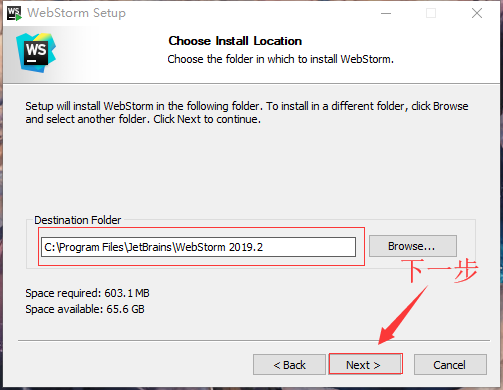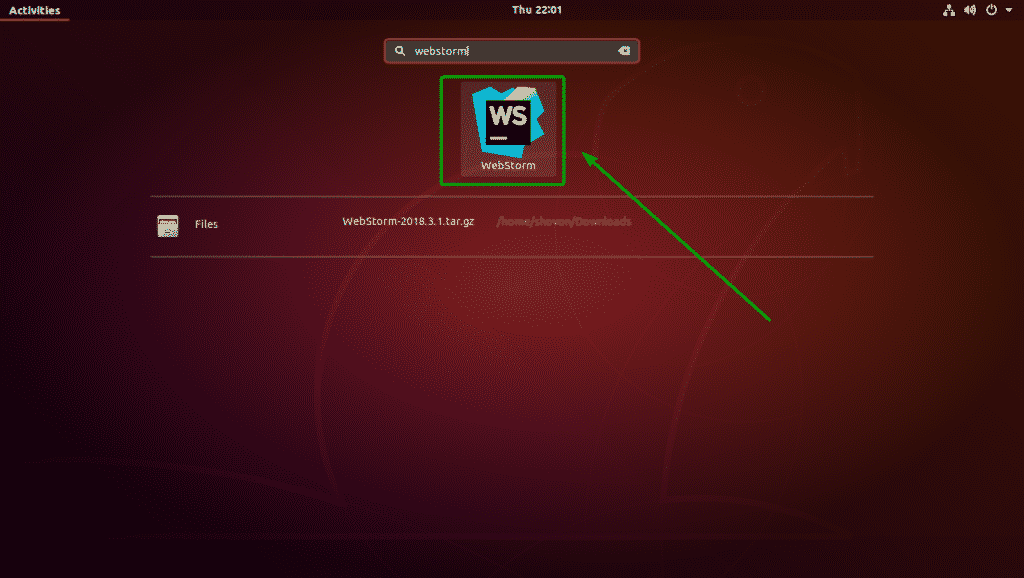
Once that is done we’re going to add the Cygwin/X launcher to our startup applications - this will start the X11 server any time we start our system.įirstly, right click on an empty space on your desktop, select “New” then “Shortcut”. Make sure to select all required packages from the section 15.

#HOW TO INSTALL WEBSTORM LINUX HOW TO#
Please head over to for detailed instruction on how to get it installed. Installing Cygwin/X on WindowsĪs there’s already a great documentation page dedicated to installing Cygwin/X on Windows, I’m not going to repeat these instructions here.

I tried a few of them to see which one works for me before settling on Cygwin/X, which turned out to be the most stable to me, even though the setup procedure is a bit more involved. There are a few different options to achieve this: To do this we’ll need to add support for X11 to our WSL with the help of X11 Port Forwarding.
#HOW TO INSTALL WEBSTORM LINUX WINDOWS#
Well, if using a Windows version of WebStorm with WSL2 is such a pain, why don’t I just run WebStorm inside WSL2. Check whether it’s installed properly: protractor -version. In case you faced errors, try: sudo npm install -g protractor. What happened for me is that my project files disappeared. Open the Terminal (Linux/Mac) or command prompt (Windows) and follow the steps: Use npm to install Protractor globally with: npm install -g protractor. idea folder gets corrupted by Windows version of Jetbrains tools This particular problem can be observed by opening freshly pulled project from repository, opening it in Jetbrains editor, closing the project and re-opening it. Line endings can be changed in Jetbrains tools to whatever you prefer, but that might not be ideal when dealing with projects on WSL and Windows from the same setup This will not be the case on WSL, and could get you into some problems down the line. On Windows the git client does the conversion between CRLF and LF for you when pulling and committing changes, so this is not an issue. This however can cause problems when editing files on WSL. Incorrect line endings By default WebStorm/IntelliJ/P圜harm assume that the files you write should be using the line endings from the OS you’re in. “Filesystem Case-Sensitivity Mismatch” This can be easily fixed by going to “Help” -> “Edit Custom Properties”, and setting =true as described here: One thing to watch out with this setting is that you’re going to get that same warning when you open a project from your windows partition, so setting it to true might not be the optimal option. raises a warning “External file changes sync may be slow” From what I gathered it’s because WebStorm can’t start the fsnotifier64 on a network drive, which it thinks our Linux is on.

This however causes a number of problems listed below If that is not the first time you are using WebStorm, just go to File -> New -> Project to get a new project configuration window opened. This problem has been described well by a lot of blog posts and bug reports, and everyone suggests to keep your project files on native Linux filesystem, for example /home//projects like I do. If you just had installed WebStorm, you will probably see a dashboard with different options Create New Project, Open and Check out from Version Control. Here’s a list of the problems I myself encountered when using WebStorm with WSL2 (the problems are the same in any of their tools - WebStorm, P圜harm and IntelliJ): Example problems

However, please note that this will install the pure JavaScript implementation of Sass, which runs somewhat slower than the other options listed here.If you managed to get here then I’m assuming you also have problems using Jetbrains tools with Windows Subsystem for Linux 2 (WSL2). If you use Node.js, you can also install Sass using npm by running npm install -g sass That’s all-there are no external dependencies and nothing else you need to install. Learn More About Sass Install Anywhere (Standalone) You can install Sass on Windows, Mac, or Linux by downloading the package for your operating system from GitHub and adding it to your PATH. If you're brand new to Sass we've set up some resources to help you learn pretty darn quick. You can also run sass -help for more information about the command-line interface. For example: sass source/stylesheets/index.scss build/stylesheets/index.cssįirst install Sass using one of the options below, then run sass -version to be sure it installed correctly. When you install Sass on the command line, you'll be able to run the sass executable to compile.


 0 kommentar(er)
0 kommentar(er)
